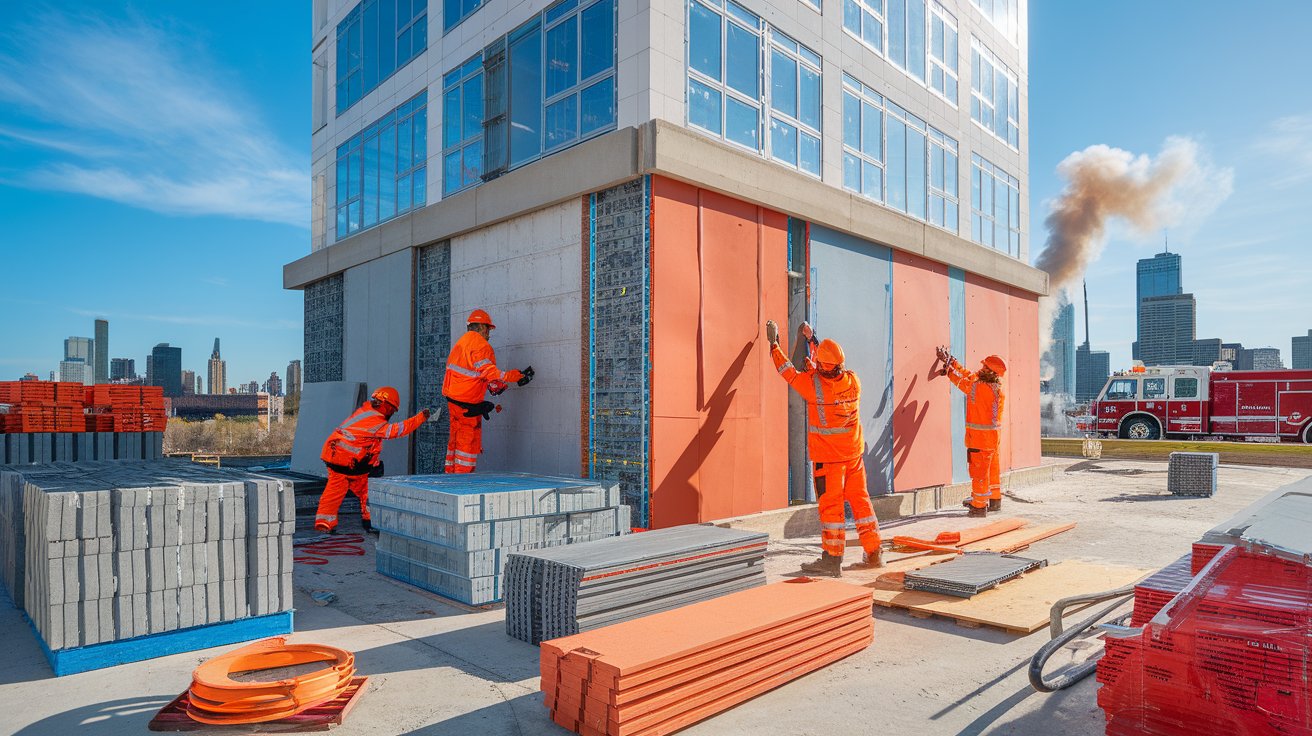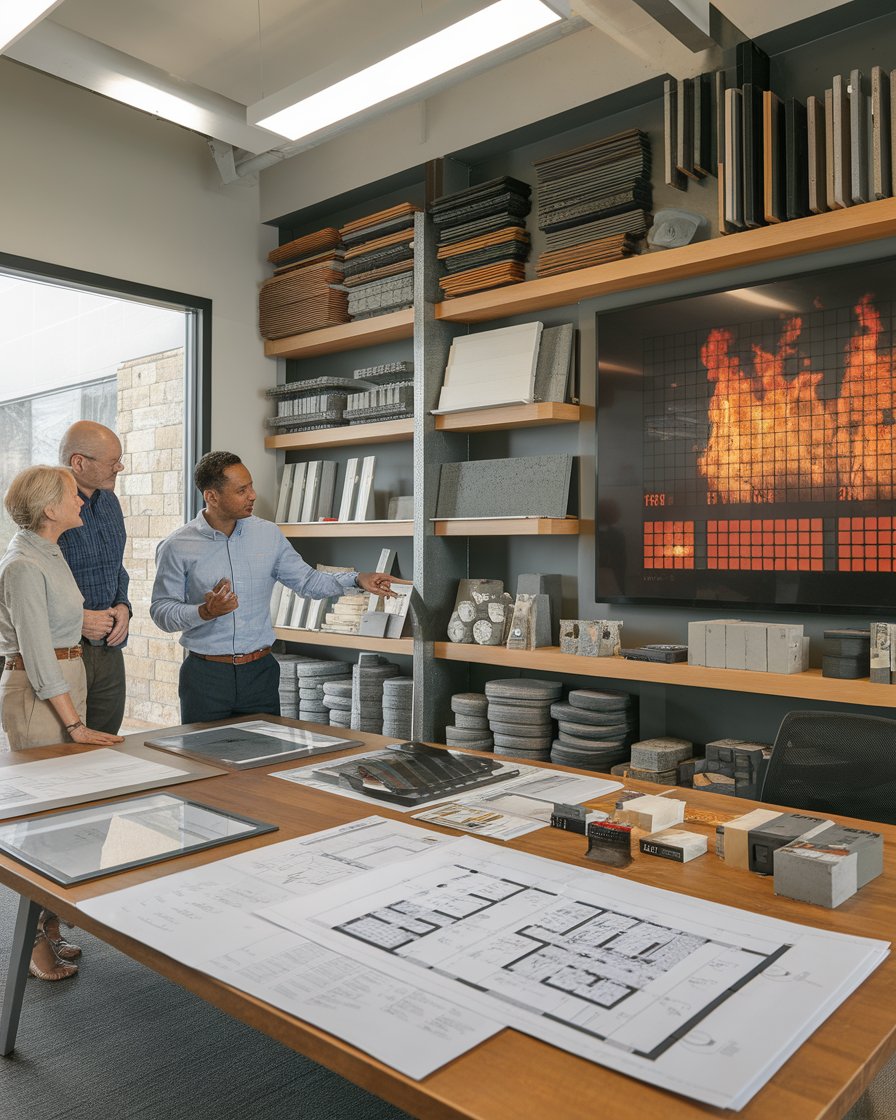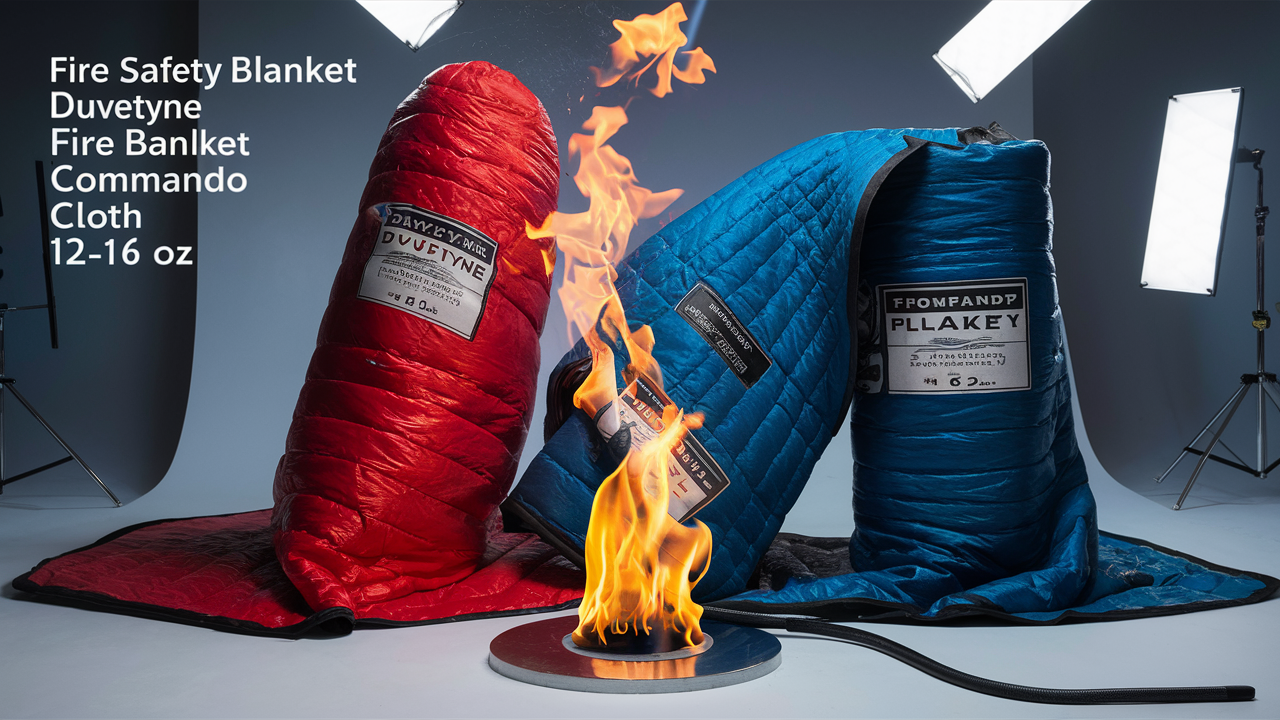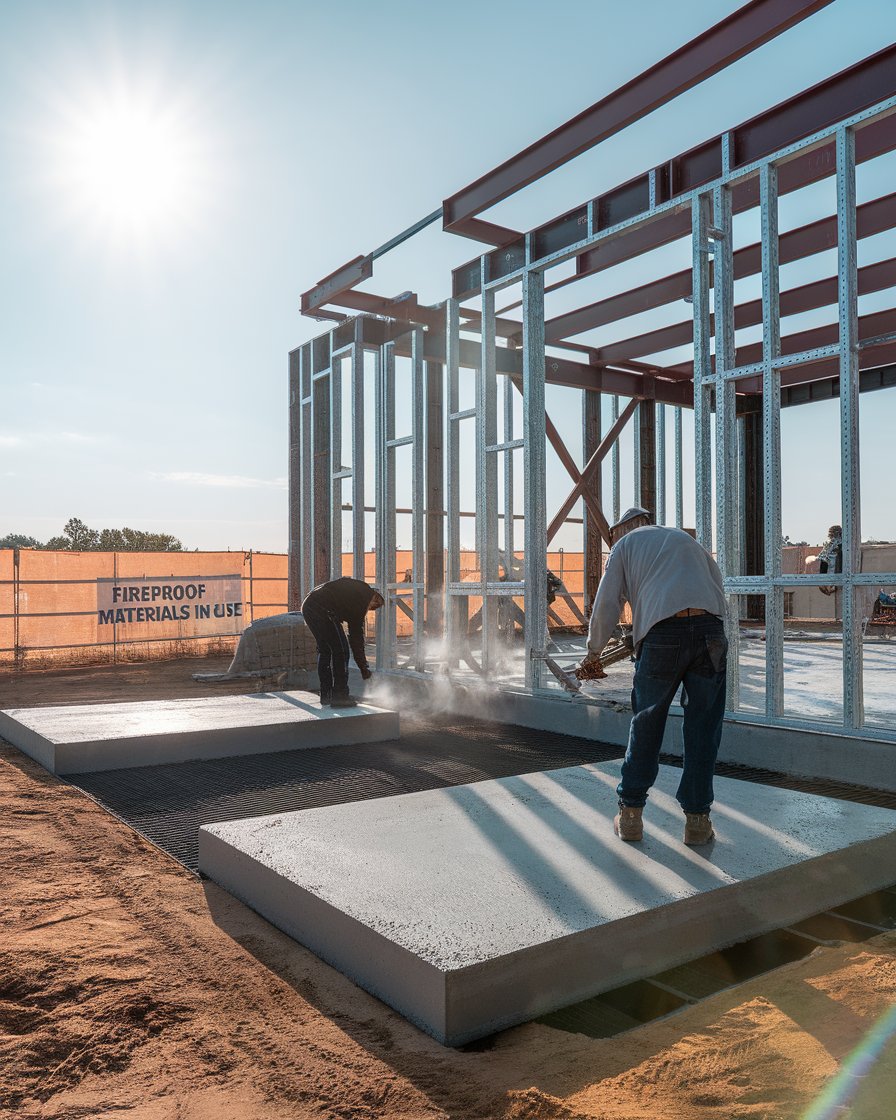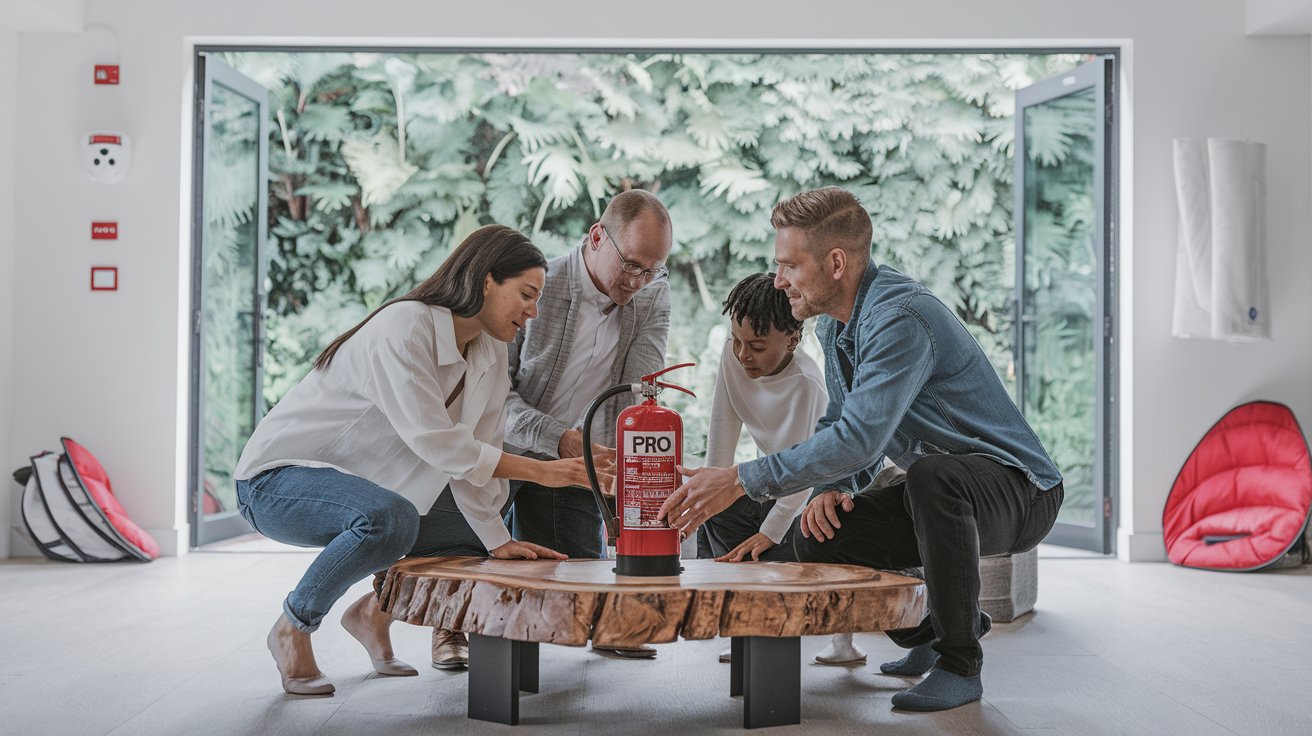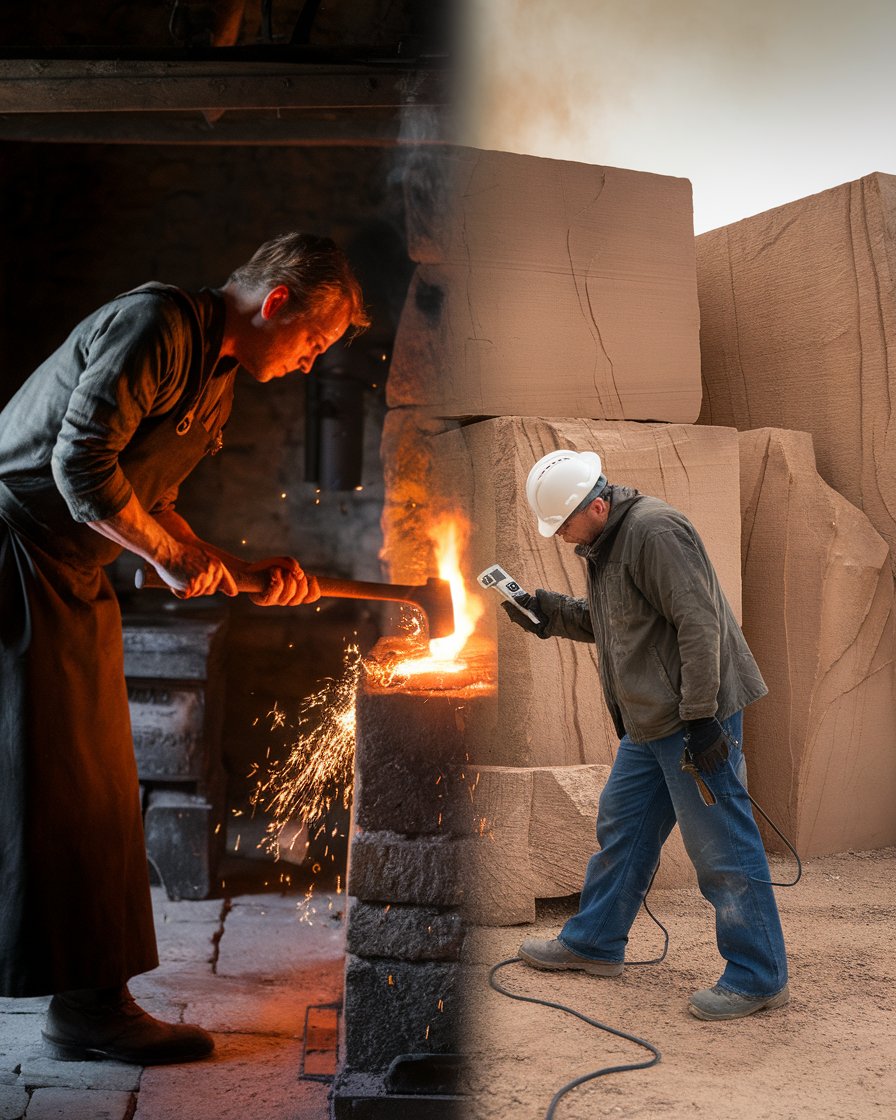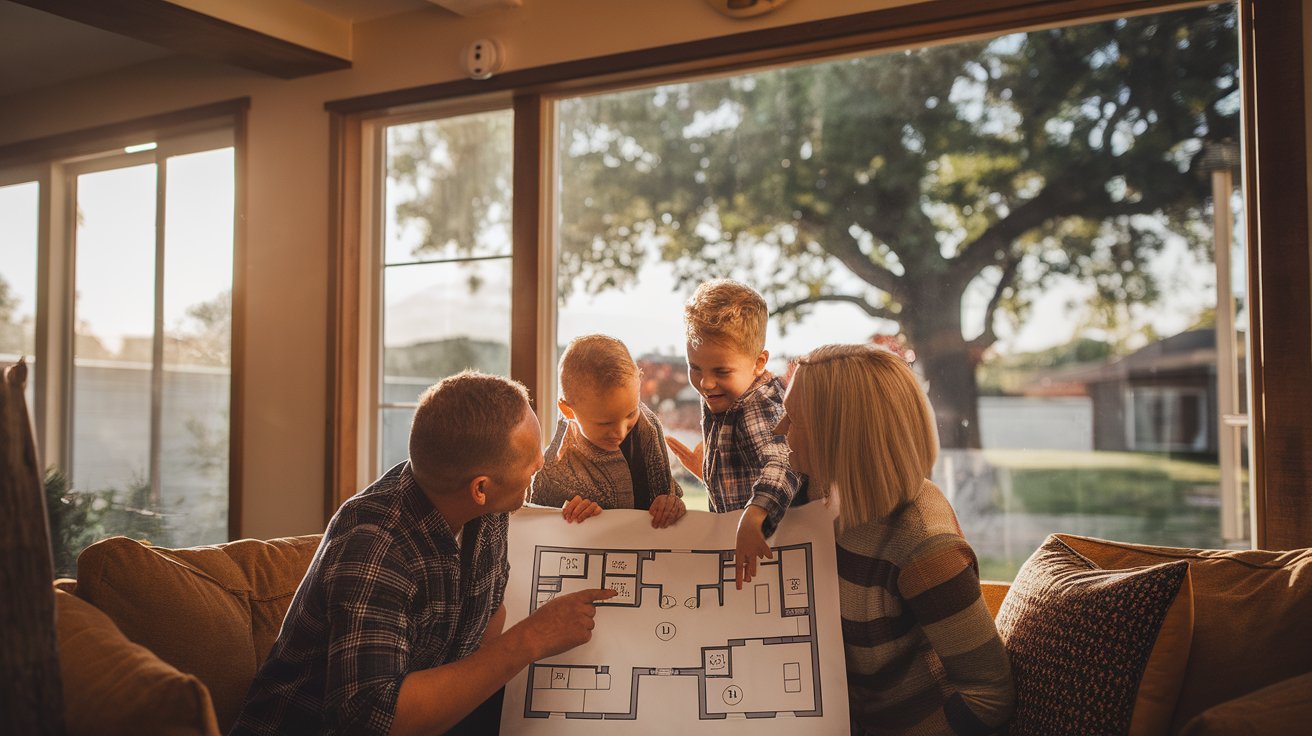Introduction
Fire-resistant construction plays a crucial role in protecting buildings and their occupants from fire hazards. By using fire-resistant materials, such as drywall, and understanding how materials react to heat and flames, builders can greatly reduce the risk of fire spread. Whether it’s ensuring that doors and windows meet fire-resistant standards or selecting the right materials for walls and floors, every decision impacts the building’s safety. Following a comprehensive guide to fire-resistant strategies helps maintain the integrity of structures under fire conditions, giving occupants more time to escape and minimizing damage.
Incorporating fire-resistant interior finishes and using materials that are designed to withstand high temperatures is essential for fireproof construction. Builders must pay close attention to the fire resistance of concrete structures, ensuring that they use the best fire-resistant solutions available. Multiple layers of gypsum board, fire-retardant coatings, and dual-paned glass windows are common strategies to prevent fire penetration and protect the building’s integrity even when exposed to flames.
Key Takeaways
- Fire-resistant construction is crucial for protecting buildings and occupants by minimizing the risk of fire spread through the use of fire-resistant materials.
- Understanding how different materials, like drywall and gypsum board, react to heat is key to creating safer buildings that withstand fire hazards.
- Ensuring doors and windows meet fire-resistant standards is essential for maintaining the overall fire safety of a building.
- Fire-resistant interior finishes play a critical role in fireproof construction by preventing fire penetration and slowing the spread of flames.
- Builders should use multiple layers of fire-rated materials, such as gypsum board and fire-retardant coatings, to protect the structure from damage in case of a fire.
- Fireproofing strategies involving the right combination of materials help maintain the building’s structural integrity and provide more time for evacuation during fire emergencies.
Understanding Fire-Resistant Ratings and Standards
Fire-resistant ratings and standards are essential in safeguarding buildings and their occupants from fire hazards. These ratings help determine how long specific construction materials can withstand flames and heat before they lose integrity. By understanding these ratings, builders, architects, and homeowners can make informed decisions on the best materials to use. Materials like fire-resistant glass, drywall, and insulation are commonly tested and rated to ensure they meet safety regulations. These standards also help slow the spread of flames, providing more time for people to evacuate and reducing overall damage. This understanding plays a crucial role in constructing safer, more resilient buildings.
Fire Safety Guide to Fire-Resistant Building Materials
-
Understanding Fire-Resistant Ratings Fire-resistant ratings are the foundation of fire safety in building materials. These ratings, based on rigorous tests, measure how long materials like drywall, fire-resistant glass, and insulation can withstand flames and heat. Knowing these ratings helps builders select the best materials to prevent fires from spreading and protect the building’s integrity. Fire-resistant materials provide extra time for evacuation, which can save lives in emergencies.
-
Choosing Materials Based on Fire Resistance Selecting the right materials used in construction is essential for fire safety. Materials like gypsum board, which is commonly used in interior walls, offer excellent fire resistance. Similarly, fire-resistant insulation and tempered glass can slow the spread of flames, protecting both the building and its occupants. Understanding how each material reacts to heat ensures that they will maintain their integrity during a fire.
-
Fire Compliance and Building Codes Following fire resistance standards ensures that construction projects comply with local building codes and safety regulations. Materials like mortar and gypsum sheathing are non-combustible and meet strict fire ratings, offering an extra layer of protection. Compliance with these standards is vital to reduce the risk of fire-related injuries and property damage. Fire-rated materials help slow the flames’ advance, giving firefighters more time to respond and control the situation.
-
The Role of Fire-Resistant Glass and Coatings Fire-resistant glass is a critical component in ensuring a building’s safety. Rated to withstand intense heat for extended periods, this glass helps prevent fire penetration into interior spaces. Additionally, applying fire-retardant coatings to structural elements like steel or wood increases their fire resistance, maintaining the building’s strength even in extreme heat. These coatings play a significant role in preserving the integrity of structures during a fire.
-
Impact of Non-Combustible Materials Non-combustible materials, such as concrete and steel, are crucial for creating fire-safe environments. These materials are inherently fire-resistant and provide a stable structure during fire incidents. Their ability to withstand high temperatures without losing strength makes them a preferred choice for fire-prone areas. Additionally, non-combustible materials reduce the ignition risks, making the building safer overall.
-
Understanding Compliance with Fire Standards Compliance with fire safety standards ensures that the building materials meet the necessary ratings to protect occupants. Ensuring that the building’s walls, floors, and doors and windows are constructed with fire-resistant interior finishes helps contain fires and reduce damage. Staying updated with these regulations and using inherently fire-resistant materials ensures the long-term safety and resilience of a building.
Use of Ratings for Material Assessment
Fire resistance ratings play a crucial role in determining how well building materials can endure fire exposure. These ratings are typically classified based on standardized tests that measure the time a material can withstand flames and heat before losing integrity. Building professionals utilize these ratings to assess and select the appropriate materials for various constructions, ensuring they choose products that offer the highest level of safety under fire conditions. Materials such as drywall, fire-resistant insulation, and tempered glass are frequently rated to ensure they can resist fire and slow its spread, enhancing the building’s overall fire safety.
Compliance with Safety Protocols
In addition to material assessment, adherence to fire resistance ratings ensures compliance with building codes and safety regulations. Regulators require that specific materials meet established standards to protect the lives of occupants and minimize property damage during emergencies. Knowing and following these ratings is vital in creating safe living and working environments. Common fire-resistant materials include non-combustible substances like mortar and gypsum sheathing. These not only meet the required fire ratings but also offer additional layers of protection, slowing the spread of flames and preventing further damage during fire incidents.
Top Fire-Resistant Building Materials
When it comes to fire safety, selecting the right building materials is critical to minimizing damage and ensuring occupant safety. Fire-resistant materials can slow the spread of fire, providing crucial time for evacuation and protecting the structural integrity of a building. Materials such as concrete, steel, and fire-resistant glass are often used in construction due to their ability to withstand high temperatures and resist fire. These materials play a key role in fire safety strategies, helping to prevent the rapid spread of flames and reduce the potential for fire damage in both residential and commercial structures.
Case Study: Fire-Resistant Building Materials in Grenfell Tower Fire
One of the most devastating fires in recent history, the Grenfell Tower fire in London, highlighted the importance of using fire-resistant materials in construction. The building’s cladding was made of combustible materials, which allowed the fire to spread rapidly. Experts pointed out that had fire-resistant cladding been used, the fire’s spread could have been slowed, giving more time for occupants to escape. Materials like concrete and steel, which are often used in fireproofing strategies, were present in the building but were not adequately protected. This tragedy emphasized the need for proper fireproofing measures such as fire-resistant glass and intumescent coatings on steel.
In response, many countries have since updated their building codes, ensuring that high-rise structures include non-combustible materials like concrete and steel to reduce the risk of similar events. This case study demonstrates how critical it is to select the right fire-resistant materials to protect lives and maintain the structural integrity of buildings.
Concrete: Composition and Fire Resistance
Concrete is a widely recognized fire-resistant material known for its durability and strength in the face of extreme heat. Its composition, made primarily of cement, sand, and aggregate, allows it to withstand temperatures up to 1000°C for prolonged periods. Concrete doesn’t ignite or contribute to the spread of flames, making it one of the most reliable materials in fire-resistant construction. Additionally, its fire-rated properties offer excellent insulation, helping to protect other structural materials. Builders frequently use concrete in walls, floors, and roofing materials to prevent the spread of fire and ensure that buildings maintain their structural integrity under intense heat.
Steel: Structural Integrity and Fire Protection
Steel is renowned for its exceptional strength and ability to support large structures, but its fire resistance requires additional measures. Although steel has a high melting point of around 1400°C, it begins to lose its strength at temperatures as low as 600°C. To counteract this, steel is often coated with fire-resistant materials, such as intumescent paint, which expands when exposed to heat, creating an insulating layer. This protective layer helps slow down the spread of fire and maintains the structural integrity of the steel framework. By combining steel with fire-resistant coatings, builders can ensure a robust and fire-safe structure.
Considerations for Cast Iron and Stone Materials
When it comes to fire-resistant construction, both cast iron and stone present unique challenges and benefits. Cast iron, while strong, can become brittle and shatter when exposed to extreme heat followed by rapid cooling. Stone, on the other hand, varies greatly in how it reacts to fire based on the type of stone used. Understanding these materials’ limitations and behaviors under fire is crucial for architects and builders looking to incorporate them into fire-resistant designs. By selecting the right combination of materials, such as combining cast iron with more stable options or choosing the right type of stone, construction teams can enhance safety and durability.
Cast Iron: Shattering Under Heat Exposure
Cast iron has long been admired for its strength and durability in structural applications, but it’s not without its fire-related drawbacks. When exposed to extreme heat and then rapidly cooled, cast iron can shatter, posing a significant safety risk. This tendency to break under fluctuating temperatures makes it less desirable for use in fire-resistant structures. However, cast iron is still sometimes used in conjunction with other more fire-resistant materials like brick or concrete to enhance structural integrity. By reinforcing cast iron with more stable components, builders can leverage its strengths while mitigating the risks associated with its thermal vulnerability.
Stone: Effects of Different Types under Fire
Different types of stone react to fire exposure in varying ways, making material selection critical when considering fire safety. Granite, for example, can fracture violently when exposed to high heat, making it a potential hazard in certain fire-prone areas. Limestone, on the other hand, tends to crumble when exposed to fire, limiting its structural reliability. Sandstone offers better resilience under heat, maintaining its integrity longer than other types of stone. However, even with stone materials that withstand fire better, strategic planning is necessary to ensure they are appropriately integrated into the building’s fire-resistant design to maintain safety and functionality.
“Fire is the test of gold; adversity, of strong men.” – Seneca
Strategies for Fireproof Construction Practices
Fireproof construction practices are essential in ensuring that buildings are equipped to withstand fire exposure and reduce potential damage. By carefully selecting materials and employing fire-resistant techniques, builders can greatly minimize the risk of fire spread and enhance occupant safety. Whether through the use of insulation materials like fiberglass or flame retardants, or integrating fire-resistant glass and steel, every element of a building’s design plays a critical role in fire safety. Implementing these strategies early in the construction process ensures a structure that is not only resilient but also compliant with fire safety standards.
Tailored Approaches for Materials
Incorporating fire-resistant materials into building designs requires a deep understanding of how different substances react to heat and flames. Builders must choose the right combination of materials and apply fireproofing techniques that best suit each type. For example, using gypsum boards—known for their excellent fire resistance—helps prevent the spread of flames, particularly in interior walls and ceilings. Similarly, reinforcing steel with fire-retardant coatings protects the structural integrity of the building under intense heat. These material-specific strategies are vital in creating a robust fire safety system, reducing the risk of fire spread, and maintaining safety in construction.
Importance of Early Consultation with Experts
Engaging fire protection experts early in the construction planning phase is essential to developing comprehensive fireproofing strategies. These professionals can guide builders on the appropriate materials to use, such as fire-resistant glass windows or multi-layer gypsum boards, ensuring that the building complies with local fire safety regulations. Fire experts also advise on advanced techniques like using intumescent coatings, which expand under heat to provide an additional layer of protection. Consulting with fire safety experts from the start helps prevent costly changes later and ensures the construction meets the highest standards of fire resistance, protecting both the building and its future occupants.
Conclusion
In conclusion, fire-resistant materials play a huge role in keeping buildings safe from fire hazards. By choosing materials like drywall, which helps to slow down the spread of flames, builders can give more time for people to get to safety. This is especially important when it comes to fire prevention, as using the right materials used for construction can greatly reduce the risk of ignition. With smart planning, we can protect buildings and the people inside them.
On top of that, using modern solutions like fire-resistant glass that is four times stronger than regular glass adds another layer of defense. This kind of glass can hold up against heat and stop flames from entering. Combined with multi-layer gypsum board, it helps keep buildings strong, even during a fire. By understanding how fire and smoke interact with different materials and working with experts, builders can create much safer spaces for everyone, ensuring long-term safety in buildings.

